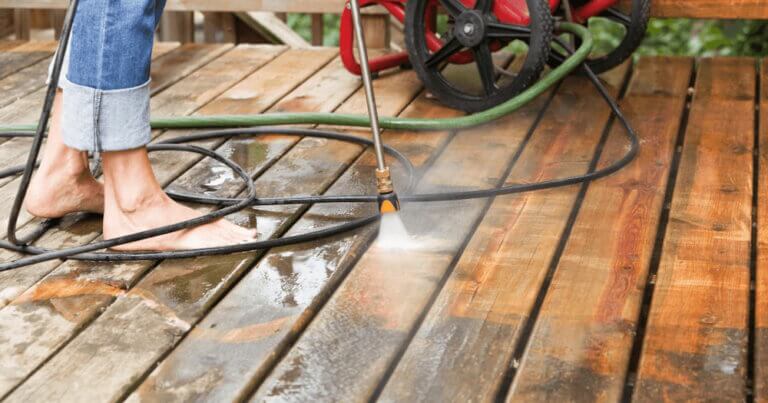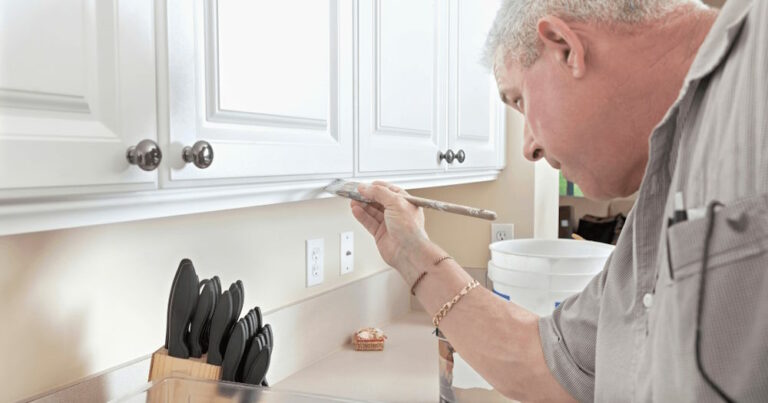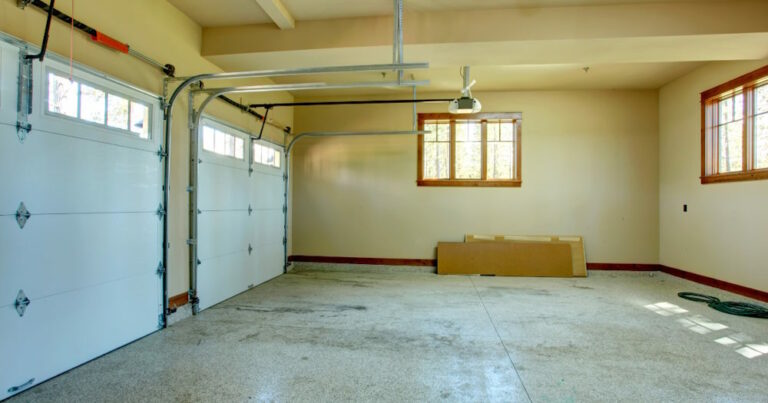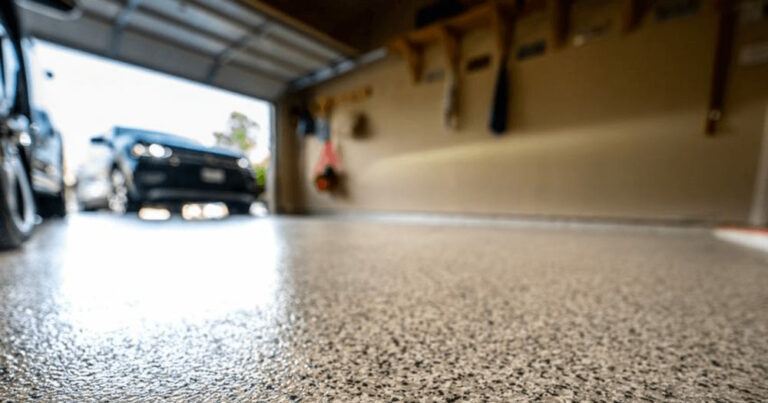Are you looking for creative and innovative ways to refresh the exterior of your home? A new coat of paint can do wonders for your home’s curb appeal and overall appearance. Whether you want to create a bold statement or maintain a timeless elegance, there are various exterior house painting ideas to choose from.
In this section, we will explore a variety of ideas and techniques to help you transform your house into a welcoming and attractive space. From choosing the right color palette to incorporating nature-inspired hues, we’ve got you covered.
Key Takeaways:
- There are many exterior house painting ideas to fit your preferences and style.
- The right color palette can greatly impact the overall appearance of your home.
- Using bold and vibrant hues can add personality and charm to your home’s exterior.
- Neutrals are a classic choice and can provide a sense of elegance and timelessness.
- Accent colors, two-tone designs, and contrasting trim and fascia can create visual interest.
Choosing the Right Color Palette
When it comes to exterior house painting, choosing the right color palette is crucial to achieve a cohesive and harmonious look. Here are some tips to guide you through the process:
Evaluate Your Home’s Architecture
The first step in selecting the perfect color palette is to consider your home’s architectural style. Different styles lend themselves to different color schemes, and it’s essential to choose a palette that complements the overall design of your home. For example, a colonial-style home may look best with classic colors such as white, navy, and red, whereas a modern home can handle bolder colors like turquoise or bright yellow.
Consider the Surrounding Environment
The color palette you choose should also complement the surrounding environment. If your home is surrounded by lush greenery, earthy tones may be the perfect choice to create a sense of harmony with the natural world. Alternatively, if your home is situated in an urban area, a brighter and more vibrant color scheme may be more fitting to stand out in the landscape.
Test Your Colors
Before committing to a color scheme, it’s crucial to test your colors. Don’t rely solely on online images or paint swatches; instead, purchase sample pots of your top choices and paint small sections of your home’s exterior. Observe the colors at different times of day and evaluate how they look in different lighting conditions. This will help you make a more informed decision and avoid costly mistakes.
By considering these factors and testing your colors beforehand, you can confidently select a color palette that will enhance the beauty and charm of your home’s exterior.
Embracing Bold and Vibrant Hues
When it comes to exterior house painting, bold and vibrant hues can add a pop of personality and charm that can set your home apart from the rest of the neighborhood.
Bold colors like deep reds, bright oranges, or even sunny yellows can add warmth and energy to your home’s exterior. Vibrant blues or greens can bring a fresh and modern feel to a traditional home.
If you’re not ready to commit to a full coat of bold paint, consider incorporating it as an accent color on shutters or doors for a subtle but eye-catching touch.
“Bold colors like deep reds, bright oranges, or even sunny yellows can add warmth and energy to your home’s exterior.”
For a cohesive look, choose colors that complement each other and your home’s architectural style. A color wheel can help you determine which colors pair well together.
| Color Pairings | Complementary Colors |
| Red and Green | Yellow and Purple |
| Blue and Orange | Red and Yellow |
| Purple and Yellow | Blue and Green |
When it comes to bold and vibrant colors, the key is to balance them with more neutral tones for a polished look. For example, pair a bright yellow with gray or beige accents for a sophisticated touch.
Whatever your preferences, embracing bold and vibrant hues in your exterior house painting project can bring a fresh and exciting look to your home that you’ll love for years to come.
Emphasizing Neutrals for Timeless Elegance
When it comes to exterior house painting, neutral colors are a classic choice that never goes out of style. The simple, understated elegance of neutral shades can bring a sense of tranquility, balance, and sophistication to your home’s exterior. Neutral colors also offer versatility, as they can complement a wide range of architectural styles and landscapes.
Here are some popular neutral exterior house colors to consider:
| Color | Description |
| White | A crisp, clean, and bright option that creates a timeless look. It also makes the home appear larger and more inviting. |
| Gray | A versatile and modern option that ranges from light to dark and warm to cool shades. It’s suitable for various architectural styles and provides a sophisticated backdrop for other features, such as landscaping and accents. |
| Beige/Tan | A warm and inviting option that works well with earthy surroundings. It also complements natural stone, wood, and brick elements. |
| Black | A dramatic and bold option that creates a striking contrast against other features, such as light-colored trims, shutters, and doors. It’s also ideal for a modern or contemporary aesthetic. |
While neutral exterior house colors may seem safe and uneventful, they offer a timeless approach to exterior design. They also provide a beautiful and neutral backdrop for other elements, such as landscaping, hardscaping, and architectural features. Don’t underestimate the power of neutrals when it comes to creating an elegant and sophisticated exterior for your home.
Incorporating Nature-Inspired Colors

There’s something captivating about nature’s colors, and incorporating them into your home’s exterior can create a harmonious connection between your property and the surrounding environment.
Earthy colors like greens, browns, and grays can add depth and texture to your home’s exterior. Consider using shades of these colors to create a natural, welcoming feel.
Greens
Green is a versatile color that evokes feelings of growth, new beginnings, and harmony. It’s a popular choice for exterior house painting, especially for homes that have a lot of natural surroundings.
Shades of green that work well for the exterior of homes include:
| Shade Name | Description |
| Sage | A muted green with hints of gray, perfect for creating a calming atmosphere. |
| Olive | A warm green with brown undertones, ideal for homes with more reserved architecture. |
| Forest | A deep, rich green that creates a sense of security and safety. |
Browns
Brown is a grounding color that brings a sense of stability and warmth to your home’s exterior. It’s an excellent choice for homes that have a lot of natural wood or stone features.
Shades of brown that work well for the exterior of homes include:
- Tan: A light, warm brown that complements many architectural styles.
- Cocoa: A rich, dark brown that creates a sense of elegance and luxury.
- Mahogany: A deep reddish-brown that adds depth and richness to any home’s exterior.
Grays
Gray is a timeless and sophisticated color that can create a range of looks, from classic to modern. It’s a versatile option that pairs well with a variety of accent colors.
Shades of gray that work well for the exterior of homes include:
- Charcoal: A deep, dark gray that adds drama and creates a contemporary look.
- Dove: A light, cool gray that complements many different styles of architecture.
- Slate: A medium gray with blue undertones that adds depth and richness to any home’s exterior.
When selecting nature-inspired colors for your home’s exterior, consider the surrounding environment and architectural style. By choosing the right shades, you can create a cohesive and welcoming look that blends beautifully with nature.
Playing with Accent Colors
If you’re looking to add visual interest to your home’s exterior, incorporating accent colors into your paint job is a great way to achieve that goal. By strategically placing accent colors in certain areas, you can highlight architectural features and create a personalized look that sets your home apart.
When choosing accent colors, consider colors that complement the main color palette of your home. Bold and bright colors can make a statement, while muted tones can provide a subtle touch of contrast.
Where to Use Accent Colors
“Accent colors should be used sparingly and deliberately. Too many accent colors can overwhelm the eye and detract from the overall aesthetic.”
Here are some common areas where accent colors can be effectively used:
- Window trim
- Shutters
- Front door
- Gutters and downspouts
Choosing Your Accent Colors
When selecting accent colors, look for colors that either complement or contrast the main color palette of your home. Consider the following:
- Complementary Colors: These colors are opposite each other on the color wheel, such as blue and orange or yellow and violet. Complementary colors can create a harmonious and balanced look.
- Analogous Colors: These colors are next to each other on the color wheel, such as green and yellow or blue and purple. Analogous colors can create a cohesive and aesthetically pleasing look.
- Contrasting Colors: These colors are dramatically different, such as purple and yellow or red and green. Contrasting colors can create a bold and eye-catching look.
Accent Colors for Different Styles
The use of accent colors can vary depending on the style of your home. Here are some examples:
| Home Style | Accent Colors |
| Craftsman | Forest Green, Rusty Red, Gold |
| Colonial | Black, White, Burgundy |
| Modern | Charcoal Grey, Bright Yellow, Navy Blue |
Remember, accent colors should be used sparingly and deliberately. Too many accent colors can overwhelm the eye and detract from the overall aesthetic. With a few thoughtfully placed accent colors, you can create a unique and personalized look that adds character and charm to your home’s exterior.
Experimenting with Two-Tone Designs
Two-tone exterior designs are a popular trend in house painting. They add depth and dimension to your home’s exterior and make it stand out from the rest of the neighborhood. Here are some dual-color ideas to inspire you:
| Color Combination | Description |
| Dark and Light Gray | This classic combination gives your home a modern and sleek feel. Use a light gray shade for the upper portion of your home and a darker shade for the lower half. |
| White and Navy Blue | Add a touch of nautical charm to your home with this two-tone color scheme. Paint the majority of your exterior in white and use navy blue for the trim and accents. |
| Olive Green and Beige | This earthy color combination is perfect for homes with a natural, rustic feel. Use olive green for the majority of the exterior and beige for the trim and accents. |
| Black and White | A timeless and sophisticated palette that never goes out of style. Paint the exterior in white and use black for the accents, such as shutters, doors, and trims. |
If you are feeling bold, you can experiment with more than two colors. In this case, it’s essential to make sure the colors complement each other well and don’t clash. You can hire a professional color consultant or use online tools to help you find a cohesive color scheme.
Using Contrasting Trim and Fascia for a Stunning Exterior Look
When it comes to exterior house painting, contrasting trim and fascia can create a bold and visually appealing look. By using different colors to highlight the architectural features of your home, you can add depth and dimension to your exterior.
To achieve a stunning contrast, it’s important to select colors that complement each other. Here are a few ideas and tips for incorporating contrasting trim and fascia into your home’s exterior:
- Choose colors that are on opposite sides of the color wheel for a bold contrast. For example, if your home’s primary color is a warm-tone like yellow, consider using a cool-tone like blue or green for the trim.
- For a more subtle contrast, use shades that are in the same color family. For example, if your home is a light shade of blue, use a darker shade of blue for the trim.
- When choosing a color for your fascia, consider using a shade that matches your roof. This will create a cohesive and polished look.
Using contrasting trim and fascia isn’t just limited to color choices. You can also experiment with different materials to add texture and interest to your exterior. For example, using wood trim against a stucco home can add warmth and character.
When it comes to painting your trim and fascia, it’s important to use a high-quality paint that can withstand the outdoor elements. Consider consulting with a professional painter to ensure that your exterior paint job lasts for years to come.
Creating a Statement with Front Door Color
Your front door is the first thing that visitors see when they come to your home, so why not make it stand out? Choosing a bold and vibrant color for your front door can create a statement and set the tone for the rest of your home’s exterior.
When considering front door paint ideas, think about the style and color palette of your home. A bright and eye-catching color can work well on a modern home, while a more traditional home may benefit from a deep and rich color. Some popular statement door colors include:
- Red: A classic color that exudes energy and warmth, red can add a welcoming touch to any home.
- Yellow: Bright and cheerful, yellow is a great choice for homes with a more playful vibe.
- Blue: A calming and serene color, blue can create a peaceful atmosphere and complement homes with a coastal or nautical theme.
- Green: A versatile color that can range from soft and muted to bold and bright, green works well with a variety of home styles and can evoke feelings of nature and growth.
When selecting a color, take into consideration the surrounding landscape and other exterior elements like shutters and trim. For example, a red door can stand out against a white or gray exterior, while a blue door can complement a home with beige or brown siding.
To make a bold statement with your front door, you can also experiment with different finishes and textures. A high-gloss finish can add a sleek and modern touch, while a matte finish can create a more understated look. Adding a unique texture like a faux wood grain or metallic finish can also create a one-of-a-kind statement.
Ultimately, choosing a statement front door color is a chance to show off your personality and make a memorable impression on guests. With so many front door paint ideas and statement door colors to choose from, the only limit is your imagination.
Considering Historical and Architectural Factors
When it comes to historical homes, choosing the right exterior paint colors is essential. Not only do you want to enhance your home’s curb appeal, but you also want to preserve its unique character and architectural style. Here are some tips to help you select the perfect colors for your historically significant home:
Research Your Home’s History
Start by researching your home’s history to determine its architectural style and time period. This will provide you with insight into the appropriate color palettes used during that era, helping you make informed decisions.
Consider the Colors of Similar Homes in the Area
Take a look at other historical homes in your neighborhood or city to see what colors have been used. This can give you an idea of the most popular color schemes and help you make a choice that complements the overall aesthetic of the area.
Work with a Professional
Consider working with a professional paint consultant or historian who can guide you in the right direction. They can provide you with expert advice on color choices that align with your home’s architectural style and historical significance.
Embrace the Original Color Scheme
If your home retains its original paint scheme, consider embracing it. Restoring the original colors can help preserve the integrity and history of the home, while giving it a fresh look.
Highlight Architectural Details
Use paint to highlight the unique architectural details of your home, such as trim, millwork, or decorative features. This can add depth and dimension to the exterior, while celebrating the historical aspects of the home.
Use Traditional Colors
Stick to traditionally used colors for historical homes, such as earthy tones, muted shades, and pastels. These colors were commonly used during the time period of the home’s construction and will complement its architectural style.
By considering the historical and architectural factors of your home, you can create a beautiful and authentic exterior color scheme that honors the home’s unique character and design.
Exploring Unique Exterior Painting Techniques
Are you tired of the same old exterior house painting ideas? Do you want to add a touch of creativity and uniqueness to your home’s appearance? Look no further than these creative techniques for a one-of-a-kind exterior paint job.
Stencil Designs
Add visual interest to your home’s exterior with stencil designs. From simple shapes to intricate patterns, stencils can be used to create a unique and eye-catching look on your walls, doors or even concrete. Use contrasting colors to make the design pop or choose a monochromatic scheme for subtle elegance.
Faux Finishes
Have you considered adding texture to your walls? Faux finishes, such as sponging, rag rolling, or color washing, can give your home’s exterior a textured and layered appearance. These techniques work best with earthy tones, creating a rustic and warm feel.
Murals
If you want to make a bold statement, a mural may be the way to go. Add a touch of art to your home’s exterior by painting a mural on a large expanse of wall. Whether it’s a landscape, abstract design, or a whimsical scene, a mural can reflect your personality and make your home stand out.
Color Blocking
Color blocking is a technique that involves painting large swaths of color on your home’s exterior. This technique is perfect for creating a contemporary and modern look. Try using bold, bright colors for visual impact or muted tones for a subtler effect.
Texture Painting
Texture painting is a technique that adds depth and dimension to your walls. It involves using specialized brushes or rollers to create a textured surface. Use this technique to complement your home’s architecture or highlight specific features, such as columns or pillars.
Pro Tip:
Before trying any of these unique techniques, it’s important to test out your ideas on a small area first to make sure you like the look. And always remember to use high-quality paint and materials for a long-lasting and durable finish.
With these creative and unique exterior painting techniques, your home is sure to stand out in your neighborhood. Don’t be afraid to try new things and make your home a reflection of your personality and style.
Conclusion

With the variety of exterior house painting ideas and techniques available, refreshing your home’s exterior has never been easier. Whether you prefer bold and vibrant hues, timeless neutrals, or nature-inspired colors, there’s a perfect palette for you.
Remember to consider your home’s architectural style, and choose accent colors and trim that complement your primary colors. Front door color is also an excellent opportunity to make a statement and add personality.
Transform Your Home
By incorporating unique painting techniques, you can achieve a truly one-of-a-kind appearance that will make your home stand out in the neighborhood.
So, grab your paintbrush and get ready for a fun and exciting DIY project that will transform your home’s exterior and enhance its curb appeal.
FAQ
How do I choose the right color palette for my exterior house painting?
Before starting your exterior house painting project, take into consideration your personal preferences and your home’s architectural style. Consider factors such as the surrounding environment and the desired mood you want to create. You can also seek advice from professional painters or use online tools that provide color palette suggestions based on your home’s style.
What are some ideas for using bold and vibrant colors on the exterior of my house?
Bold and vibrant colors can make a strong impact on your home’s exterior. Consider using attention-grabbing hues like vibrant red, sunny yellow, or deep blue to highlight architectural features or create a focal point. You can also explore color blocking techniques to create a modern and dynamic look.
Are neutral colors a good choice for exterior house painting?
Neutral colors are a timeless and elegant option for exterior house painting. Shades like gray, beige, and taupe can create a sophisticated and versatile look that complements various architectural styles. Neutrals can also help your home blend harmoniously with its surroundings.
Can nature-inspired colors enhance the appearance of my home’s exterior?
Absolutely! Nature-inspired colors can bring a sense of tranquility and connection to your outdoor space. Consider earthy tones like greens, browns, and blues to create a harmonious and inviting atmosphere. These colors can help your home blend with natural surroundings or make a striking statement inspired by the beauty of nature.
How can I incorporate accent colors into my exterior house painting?
Accent colors can add visual interest and draw attention to specific architectural elements. You can use accent colors on features like shutters, doors, or trim. Choose colors that complement your main color palette and create a pleasing contrast. Accent colors should enhance the overall aesthetic of your home and create a cohesive look.
What are some ideas for two-tone exterior painting designs?
Two-tone exterior designs can add depth and uniqueness to your home. Consider using a lighter color for the main body of the house and a darker color for accents like the trim or doors. Another option is to divide your house horizontally or vertically and paint each section in a different color. Play around with different combinations to find the perfect two-tone design for your home.
How can I create a statement with my front door color?
Your front door is an opportunity to make a bold impression. Choose a vibrant color that stands out against the rest of your home’s exterior. Consider colors like red, turquoise, or yellow to add a pop of personality. Ensure that the color complements the overall color scheme of your home and reflects your personal style.
What should I consider when selecting colors for a historical or architecturally significant home?
When painting a historical or architecturally significant home, it’s important to respect its heritage. Research the original color schemes or consult with experts in historical preservation. Consider the architectural style and time period of your home and select colors that were commonly used during that era. Pay attention to details and ensure that your color choices align with the home’s historical significance.
Are there any unique exterior painting techniques I can explore?
Yes! There are various creative techniques you can try to give your home’s exterior a unique look. Some options include faux finishes, textured painting, stenciling, or even using unconventional materials like metal or stone veneers. Let your imagination roam and experiment with techniques that suit your personal style and the architectural features of your home.





